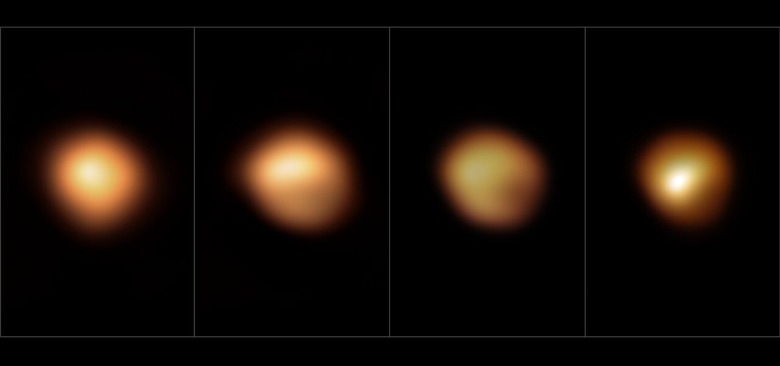Betelgeuse's Great Dimming Has A Great Explanation
The mystery of Betelgeuse's "Great Dimming" has finally been answered, astronomers say, after new images of the surface of the distant star help explain why it unexpectedly darkened in late 2019. Betelgeuse, normally a bright orange star in the constellation of Orion, visibly dimmed and stayed that way through the first few months of 2020. Though it returned to its usual brightness by April 2020, scientists were left puzzled.
Stars do, of course, change in brightness over their lifespans. However that's usually a process that's measured in centuries, not months, hence the confusion. Theories spread that Betelgeuse was about to go supernova, or that other strange possibilities had occurred to change the natural properties of the star.

Now, in new research, brand new photography of the star has shed light on just what occurred 642.5 light years from Earth. The European Southern Observatory's Very Large Telescope (ESO's VLT) was pointed at Betelgeuse in December 2019, and then continued capturing images in January, March, and April of that 2020.
Their new study, published in Nature today, explains that the dimming was actually the result of a dust veil that shaded the star from Earth. Its presence was no coincidence, either: Betelgeuse's stellar surface dropped in temperature, the astronomers say, causing a huge bubble of gas to belch out into space.
"When a patch of the surface cooled down shortly after," the ESO explains, "that temperature decrease was enough for the gas to condense into solid dust."
"We have directly witnessed the formation of so-called stardust," Miguel Montargès, who led the study, said of the findings. The team tapped the Spectro-Polarimetric High-contrast Exoplanet REsearch (SPHERE) instrument on the VLT to directly image the surface of Betelgeuse, and then combined that with data from the GRAVITY instrument on ESO's Very Large Telescope Interferometer (VLTI). That was able to monitor the star throughout the dimming process.
The hope is that the VLT will be able to more quickly wrap up such mysteries in future, because rather than taking standalone snapshots of distant solar activity it will be able to combine data on stars. "With the ability to reach unparalleled spatial resolutions, the ELT will enable us to directly image Betelgeuse in remarkable detail," Emily Cannon, from KU Leuven, who was also involved on the project adds. "It will also significantly expand the sample of red supergiants for which we can resolve the surface through direct imaging, further helping us to unravel the mysteries behind the winds of these massive stars."
